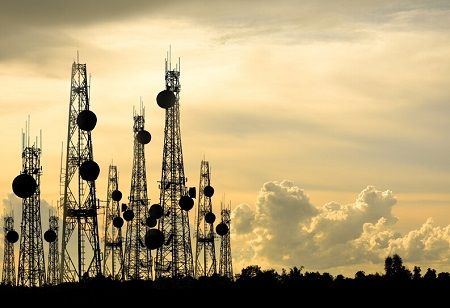
Ericsson Backs India as Telecom Hub; Vodafone Idea Plans Comeback
- Ericsson to localize antenna production in India by June 2025 and expand R&D in 5G, AI, and cloud.
- India joins Ericsson’s global manufacturing network, with plans to boost exports.
- Supports Vodafone Idea’s 5G rollout and calls for stronger domestic telecom infrastructure.
As supply chains seek alternatives for China, India today emerges as yet another innovation and manufacturing hub in telecom and electronics. Besides scaling up local manufacturing and component sourcing, Ericsson is transforming its Indian unit into a research center for 5G, cloud, and AI technologies.
Ericsson also intends to produce in full-localism passive antennas by June 2025 to realize higher value addition and export. The manufacturing capacity in India is growing, with partners like Jabil manufacturing 4G and 5G equipment and VVDN manufacturing antennas.
Andres Vicente, Head of Southeast Asia, Oceania and India said, "We are betting strongly on the future growth of this market. India is positioned like no other market to be the real alternative to the current Chinese ecosystem for innovation. It’s well-known what companies like Apple are planning in this space. We are also aiming in the same direction. We are building incremental capabilities in India, and this is possible because the market is growing".
He added, "India is becoming very attractive for building a complete manufacturing ecosystem. We are increasing our manufacturing capabilities by adding more elements. 100% of what we do including base stations in India will be produced here, and we also have significant plans to increase the value addition of manufacturing".
Through this alliance, India finds company along with Mexico, Romania, and China in the global manufacture for Ericsson. The need for passive antennas is quite strong in the domestic market, but Ericsson wishes to export reasonable-priced products out of India.
Also Read: Karnataka Approves 3 Semiconductor Projects Worth Rs 23,000 Crore
Vicente stated, "India is a market with almost 1.5 billion people — the most populated market in the world, hungry for innovation and building a strong ecosystem. It’s a market that requires strong operators. How many? That is a question for the government. But most countries with a similar size to India play with at least three operators. This is the case in the United States and China. I believe there is a scenario where Vodafone Idea can become stronger".
"It is also true that satellite-based communication can add value in case of a natural disaster, etc., by complementing first responders. But it is also in the favour of India to promote terrestrial coverage because, in the end, this is a technology that is fully in control of the national regulator and is also a technology that is created by investing in the country, creating jobs, and wealth coming out of the investment", he added.
In a competitive telecom marketplace in India, Ericsson supports Vodafone Idea in its efforts to catch up, especially with the city-wide roll-out of 5G that would enhance competition. Ericsson recently assisted Vodafone Idea in launching 5G services in Delhi-NCR, replacing Huawei's older 4G equipment.
Ericsson urges Indian policymakers to set domestically developed telecom networks as their top priority for ensuring technological sovereignty and economic growth. While commercial telecom expansion remains essential, cooperation with governments is required in less commercially viable segments to realize connectivity goals on a national scale.
"We are also betting on the market. The R&D work we are doing in India is crucial for our future as it’s focused on 6G, artificial intelligence, and network APIs. India is positioned like no other market to be the real alternative to the current Chinese ecosystem for innovation", he concluded.

.jpg)